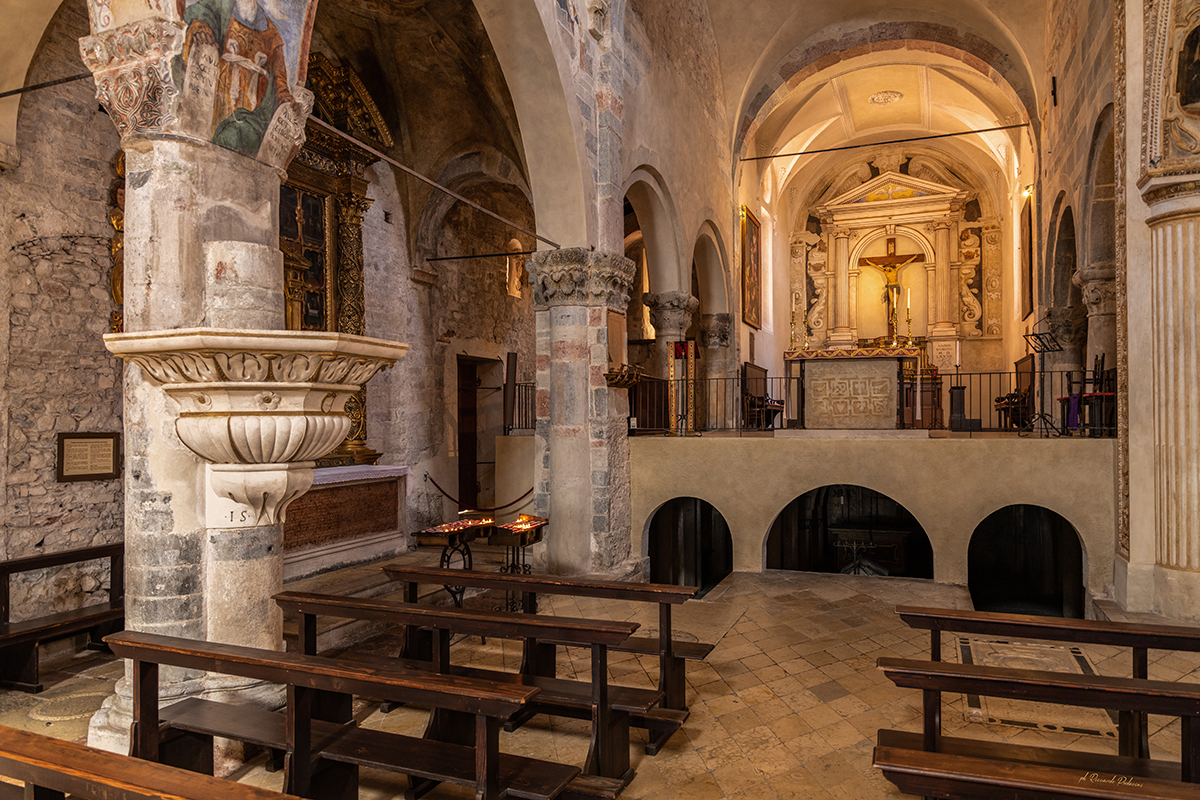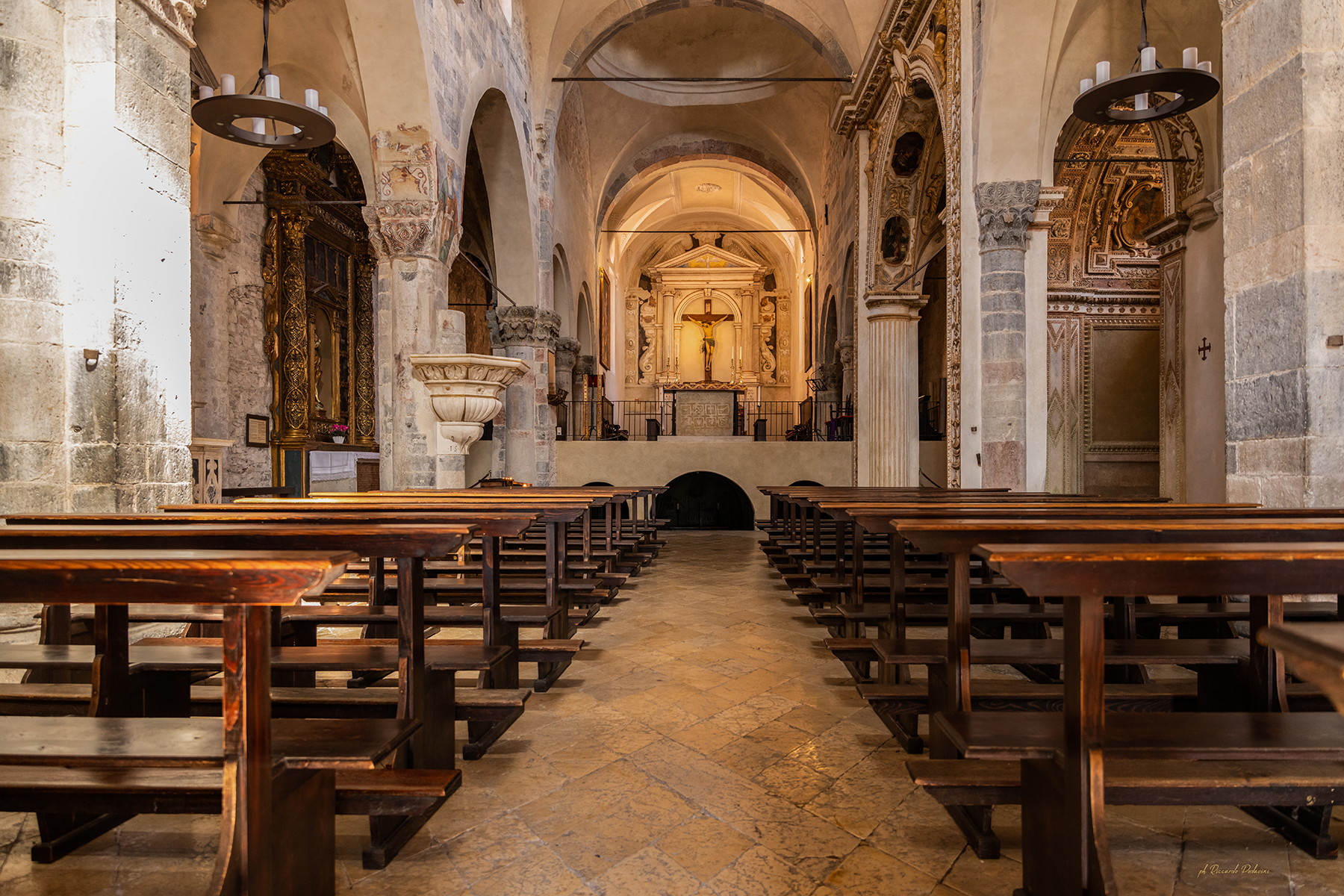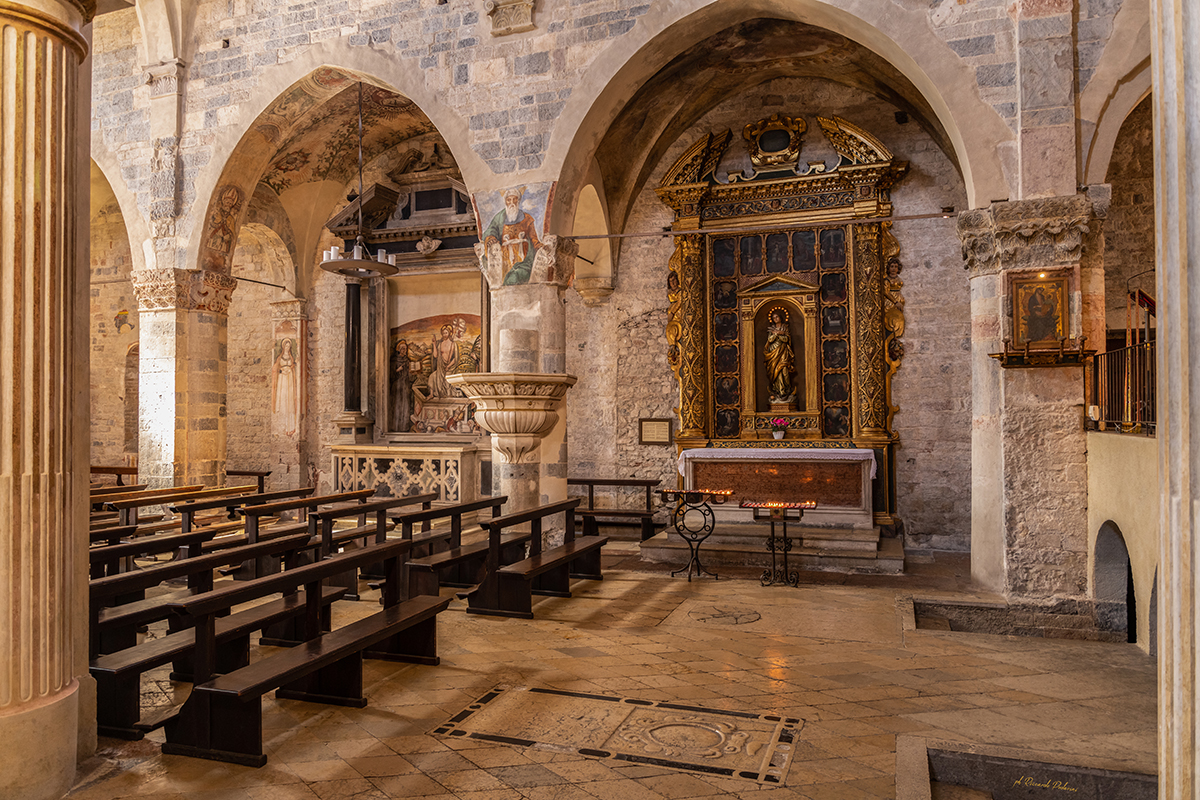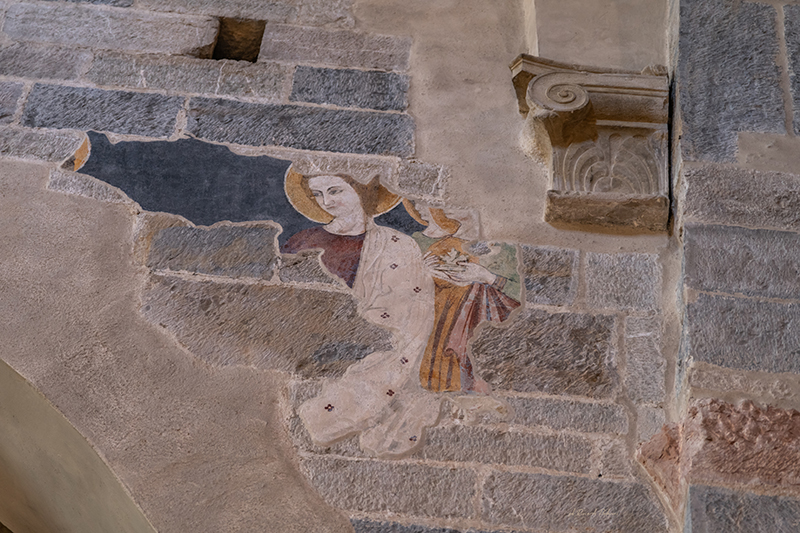 Chiesa di S. Andrea a Maderno
Chiesa di S. Andrea a Maderno
Affresco del XIV sec.
sopra il terzo arco della navata a sinistra, vicino all’altare maggiore.
Nel frammento riconosciamo chiaramente il bel volto di una santa, incorniciato da un’aureola dorata.
Chi era raffigurato in quest’affresco? La Santa veste un abito rosso scuro sormontato da un mantello bianco decorato con delicate rosette, ma nessun simbolo ci aiuta a chiarire la sua identità. Sicuramente non era sola, alle sue spalle si riconoscono almeno altre tre figure femminili. È possibile che l’insieme ritraesse una teoria di santi e sante al cospetto di una Madonna o di un Cristo, di cui ora rimane solo la traccia di un’aureola.
Curiosità: Perché l’affresco appare frammentario? La chiesa di Sant’Andrea a Maderno, costruita nel XII secolo, subì nel corso del tempo svariate modifiche. Attualmente le navate sono separate da tre coppie di pilastri. Un tempo questi pilastri erano intervallati da colonne che sostenevano piccoli archi a tutto sesto, come ancora si può vedere nella zona del coro. Attorno alla metà del Quattrocento le colonnine intermedie vennero rimosse e furono costruiti i grandi archi a sesto acuto tra i pilastri che ancora si possono vedere. La costruzione del grande arco determinò quindi la parziale perdita dell’affresco.
 Kirche von S. Andrea in Maderno
Kirche von S. Andrea in Maderno
Fresko aus dem 14.
Jahrhundert über dem dritten Bogen des linken Schiffes, in der Nähe des Hauptaltars.
In dem Fragment erkennen wir deutlich das schöne Gesicht eines Heiligen, eingerahmt von einem goldenen Heiligenschein.
Wer war in diesem Fresko abgebildet? Die Heilige kleidet sich in ein dunkelrotes Kleid, das von einem weißen Umhang mit zarten Rosetten überragt wird, aber kein Symbol hilft uns, ihre Identität zu verdeutlichen. Sicher war sie nicht allein, hinter ihr erkennen wir mindestens drei weitere weibliche Figuren. Es ist möglich, dass das Ganze eine Heiligtheorie in Gegenwart einer Madonna oder eines Christus darstellt, von der nur noch die Spur eines Heiligenscheines übrig bleibt.
Neugier: Warum scheint das Fresko in Splitter zu sein? Die im 12. Jahrhundert erbaute Kirche Sant'Andrea in Maderno wurde im Laufe der Zeit mehrfach umgebaut. Derzeit sind die Kirchenschiffe durch drei Säulenpaare getrennt. Diese Säulen waren einst mit Säulen unterbrochen, die kleine Rundbögen trugen, wie noch im Chorbereich zu sehen ist. Um die Mitte des 15. Jahrhunderts wurden die Zwischensäulen entfernt und die großen Spitzbögen zwischen den noch sichtbaren Pfeilern errichtet. Der Bau des großen Bogens bestimmte dann den teilweisen Verlust des Freskos.
 St. Andrea church, Maderno
St. Andrea church, Maderno
Fresco painting, 14th Century
on the third arch, left aisle, close to the main altar.
The detail represents the beautiful face of a saint, framed by a golden halo.
Who does this fresco depict? The Saint is wearing a dark red dress and a white roses embroidery cloak, yet no symbols help us to find out her identity. She wasn’t certainly alone, you can glimpse at least other three ladies standing behind her back. The scene was likely to illustrate a group of saints, both female and male, in front of Mary or maybe of Christ, but now only a hint of an halo is left.
Interesting facts: Why does the fresco have a fragmentary look? This church, built in the 12th Century it has been restored several times. Currently, the nave is divided into three sets of pillars. Earlier in addition to these pillars there were round arch columns like those you still see beside the choir. During the mid-15th Century these were removed to build large pointed arches between the pillars still visible. This cause the fresco to have the current fragmentary look.



